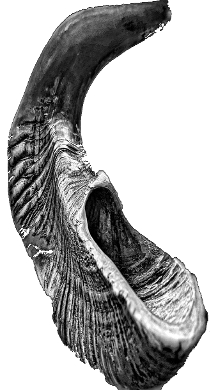
|
Rosh Hashanah
|
- Calendar Dates
- Jewish Year 5773: sunset September 16, 2012 – nightfall September 18, 2012
- Jewish Year 5774: sunset September 5, 2013 – nightfall September 7, 2013
- Jewish Year 5775: sunset September 25, 2014 – nightfall September 27, 2014
- Jewish Year 5776: sunset September 14, 2015 – nightfall September 15, 2015
- Jewish Year 5777: sunset October 3, 2016 – nightfall October 4, 2016
- Jewish Year 5778: sunset September 22, 2017 – nightfall September 22, 2017
Introduction
Rosh Hashanah occurs 163 days after the first day of Pesach (Passover)
Rosh Hashanah is the Jewish New Year and is celebrated for two days on
the first and second of Tishri. It also marks the start of the ten days of repentance.
In the Torah, Rosh Hashanah is also referred to as Yom Teruah (The Day of the Sounding of Shofar) and Yom Zikaron Teruah (The Day of Remembering the Sounding of the Sofar).
In prayer, Rosh Hashanah is also called Yom Ha’Zikaron (The Day of Memorial) and Yom Ha’Din (The Day of Judgement)
During Talmudic times, Rosh Hashanah was celebrated as the anniversary of the time that the world was created. It was the Mishna which first used the name Rosh Hashanah which has now become the commonly used name for the holiday.
It is customary on Rosh Hashanah to eat apple dipped in honey, symbolizing our hopes for a sweet and happy year. Some Jews also put honey on their challah (instead of salt) from Rosh Hashanah until the end of Simchat Torah.
Other slides in this module:
- The 7 days of Creation, Genesis 2:4-3:24
- Day One – Night and Day
- Day Two – sky and sea
- Day Three – Land and Vegetation
- Day Four – Stars, Sun and Moon
- Day Five – Sea creatures including fish and Birds
- Day Six – Animals and Mankind
- Day Seven – Rest
- Ark, Genesis 8:1- 10:20
- Hagar and Ishmael – Genesis 16:11–17:27
- Rebekah the wife of Isaac the son of Abraham, Genesis 24:1-67
- Laban Meets Jacob, Genesis 29:1-30:43
- Laban pursues Jacob, Genesis 31:1-55
- Esau Meets Jacob, Genesis 32:1-33:20
- Descendants, Genesis 36:1-43
- Jacob Moves to Egypt in a cart, Genesis 46:8 – 47:12
- 2nd 40 Years, Exodus 2:26-7:6
- Moses – 3rd set of 40 years, the book of Exodus 7:8 – 40:38
- Moses – 10 Plagues, Exodus 7:14-12:36
- Rosh Hashanah or Yom Teruah (The Day of the Sounding of Shofar)
- Passsover
- Feast of Tabernacle – Succouth or Sykkot
- Moses – Yom Kippur, means “Day of Atonement”
- 7 Feasts and a Fast – ANCIENT WEDDING CUSTOMS
- 7 Feasts and a Fast – THE MOSAIC COVENANT
- 7 Feasts and a Fast – THE SACRIFICES
- Moses – 37 years, Numbers 14:1-36:13
- Balaam, Numbers 22:1-24:25
- Three Sermons, the whole book of Deuteronomy 1:1-34:12
- Deborah the 4th Judge of Israel sends for Barak her army commander, Judges 4:9 to 5:31
- Gideon the fifth judge of Israel – Judges 6:1-8:35
- Eli the Priest and the ninth Judge of Israel, 1 Samuel 1:1-4:22
- Ruth the Moabitess, Ruth 1:16-4:22
- Jephthah the Gileadite the tenth Judge of Israel, Judges 11:16-40 & 12:1-7
- Samson the fourteenth Judge of Israel, Judges 14:1-16:31
- House hold Idols, Judges 18:1-31
- David’s soldiers, 1 Samuel 21:1-30:31
- King Rehoboam the first King of Judah, 1 Kings 11:41-12:24
- The 20 Kings of Judah who ruled between – 931BC-586BC = 345 years
- King Jeroboam, 1 Kings 11:34-14:20
- The 19 Kings of Israel – 931BC-722BC = 209 years
- King Ahab 7th King of Israel, 1 Kings 17:1-22:40
- Elijah fire, 1 Kings 18:20-46
- Hezekiah King of Judah – Continued from 2 Kings 18:1-12
- King Josiah 16th King of Judah
- Down Well, Jeremiah 38:7-40:6
- Dry Bones
- Nehemiah Inspects Jerusalem’s Walls, Nehemiah 2:11-3:32
- The Gospel of Luke
- The Gospel of Matthew
- Arranged Marriages
- Dates that Jesus might have been born
- Herodian Dynasty
- The Sermon in a level place, Luke 6:17-49
- Lazarus raised from the dead, John 11:1-45
- Passover Seder
- Passover Seder Dinner – With Notes
- Notes – Passover Seder – Communion
- Teaching on the Background to Communion
- Passover resources
- Bible Lay out
- Passover
- Possible Dates of Jesus’ Death
- Stephen Killed
- OUTLINE HISTORY OF THE APOSTLES